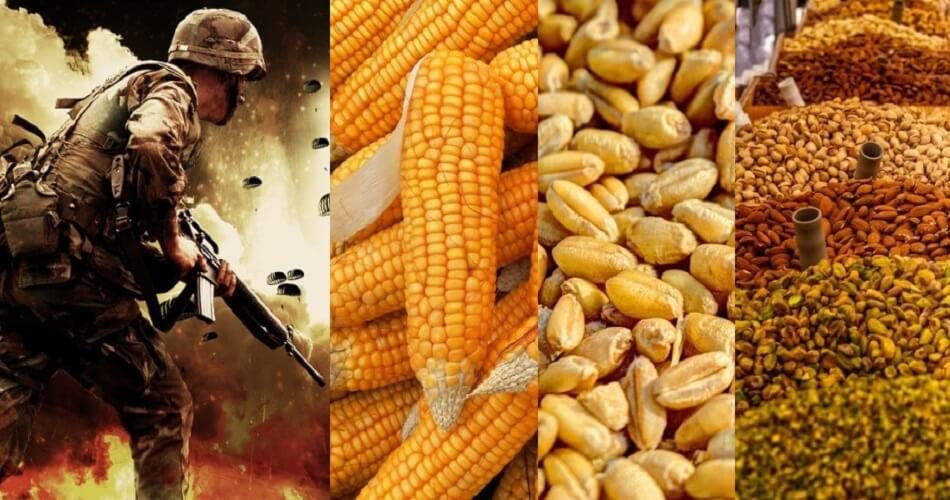Following the Ukraine war, export demand for Indian wheat, corn, and spices skyrockets.
‘Wheat prices at the Kandla port have risen in the previous four days, rising from ₹2,200 per quintal to ₹2,350-2,400 per quintal. With the Food Corporation of India (FCI) saying that its next tender this week will be the final one in March, we believe wheat and wheat products prices will rise further in the next two weeks says the president of the Roller Flour Millers Association of India, Mr. Sanjay Puri ‘The next crop will not be harvested until after Baisakhi (April 13).’
The majority of wheat in India is kept by the government agency FCI, which does not export the product. Wheat dealers urge the FCI to release more wheat into the market, which will assist regulate domestic prices, decrease excess stockpiles, and fulfilling export demand. The processing sector, on the other hand, is concerned.
Also Read | Ukraine conflict: India more concerned about agriculture exports – Finance Minister
‘We will recommend that the government immediately halt wheat exports from the nation since local prices have risen from ₹21 per kg before the commencement of the conflict to ₹24 per kg today (Tuesday). The export demand is so great that if we do not halt exports, prices will rise even more, perhaps leading to shortages in the future’ Anjani Agarwal, president of the Roller Flour Millers Association, stated.
Aside from wheat, demand for Indian maize has surged as consumers from India’s neighboring countries switched from Ukraine to India.
According to the head of an international trade consulting organization who did not want to be recognized, says ‘Ukraine was formerly a major supplier of non-GMO grain. Because of tensions in the Black Sea area and high freight charges, demand for maize from South Asia is shifting to India, as no other source can meet this need’.
He further added ‘India’s grain exports have increased in the last two years as supplies from Myanmar have declined following that country’s military takeover.’
Prices have risen as a result of increased exports of Indian grain. Godrej Agrovet’s managing director, Balram Yadav, stated, Corn farm gate prices have risen from ₹19.50-20 per kg to ₹22 per kg. It might stay there or fall somewhat by May.’
Spice prices have also risen as a result of local scarcity and high worldwide demand. ‘Ukraine is a significant supplier of coriander seeds. Coriander prices have risen by roughly 30% in recent months as the harvest has grown smaller,’ said Ashwin Nayak, the Federation of Indian Spice Stakeholders’ founding chairman. ‘We now anticipate higher export demand for Indian coriander as supplies from the Black Sea region become limited.’
Jeera prices have risen by 25-30% in four months as a result of limited output and geopolitical considerations. Because supply from countries such as Afghanistan, Turkey, and Syria have been disrupted owing to geopolitical reasons, India is currently the sole significant jeera source.
Also Read | Ukraine-Russia crisis: Indian fertiliser industry consider to source MoP, DAP from other countries
Because of the high export demand for cotton, yarn, fabric, and readymade apparel, local spinning mills have increased their use of cotton. Millers stated that an unusual 65% spike in domestic cotton prices from around ₹135 per kg in February 2021 to approximately ₹219 per kg in February 2022 is providing a challenge to exporters in completing their export obligations.
The South Indian Mills Association has petitioned the government to approve the import of 4 million bales of cotton to fulfill the high export demand. The poultry sector is preparing to guarantee that soybean prices, which are used in chicken feed, remain under control.















Add Comment